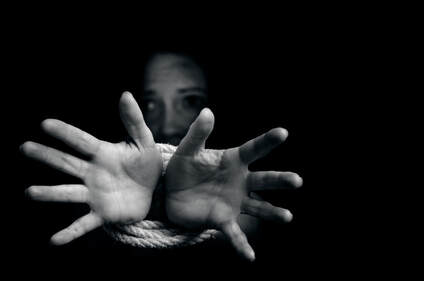 “When Christine Nambereke left for Oman last September, she was hopeful she was on her way to helping her family--including her husband, James Obed, and seven children--fight crippling poverty. An agent had promised the 31-year-old Nambereke, from eastern Uganda’s Bumbo village, a job as a housemaid with a monthly pay of 600,000 shillings ($168). But when she reached Muscat, she was sold as a slave. When she returned to Uganda in early May, she was dead. These women--all of whom died unnatural deaths after complaining of abuse--are just the most extreme examples of a growing epidemic of an increasingly open, modern slave trade that starts in Uganda’s eastern region and culminates in closed rooms in Gulf nations. Migrant workers from across Africa, South Asia and Southeast Asia have for several years complained of abuse in the Middle East. But over the past year, eastern Uganda has emerged as the theater of a double-barreled racket. At fast-spreading weekly markets, some women are promised jobs in the Gulf only to be sold once they get there, while others--many of them girls between the ages of 10 and 18--are directly and publicly ‘bought’ as slaves and then resold in the Middle East, according to Ugandan authorities, Interpol, independent experts, legislators, and victims and their families. The public sale of women started at Arapai, eastern Uganda’s second-largest market located 180 miles northeast of the capital Kampala, in January 2018, says Edina Nagudi, the local government’s officer in charge of the region’s markets. The practice quickly spread to other regional markets such as Chapi and Sire. At Arapai alone, up to 50 girls are now auctioned in a day, says Nagudi. Overall, more than 9,000 girls and young women are estimated to have been bought at these eastern Uganda markets since last year--for as little as 50,000 shillings ($14), according to Betty Atim, an Ugandan member of Parliament. And for some, even death doesn’t bring closure. After 22-year-old Shivan Kihembo died in Oman in October--months after she had been sold there--her father, Patrick Mugume, was asked by his daughter’s ‘owners’ for money if he wanted her body back. ‘I sold my land and sent it to her boss in Oman before the body was released,’ he says. Uganda has a per capita income of $604, so Nambereke was promised three times what the average Ugandan earns. Some, like Stella Namazzi, who escaped from her masters in Jordan, return with tales of horror. ‘We were lined up in a big room,’ she recalls. ‘Those who wanted to buy us came and pointed out who they wanted to buy. We were sold as if we were domestic animals.’ For the traffickers, there’s big money involved: The women bought for $14 are sold for as much as $10,000 in the Middle East, authorities say. When Zubedah Nakitende complained to her Jordanian employers that her hands were aching from work, her boss gave her what she thought was water to wash her hands. It turned out to be an acid that ate up her fingers. Unable to work anymore, she was sent back to Uganda--where she had to have her fingers amputated.” “Modern-day Slavery,” msn.com, June 2, 2019 Comments are closed.
|
Archives
February 2020
|
Ads do not imply endorsement | Policy/Terms of Service | About Us | Contact Us | © Life Work Academy, Inc.
 RSS Feed
RSS Feed

